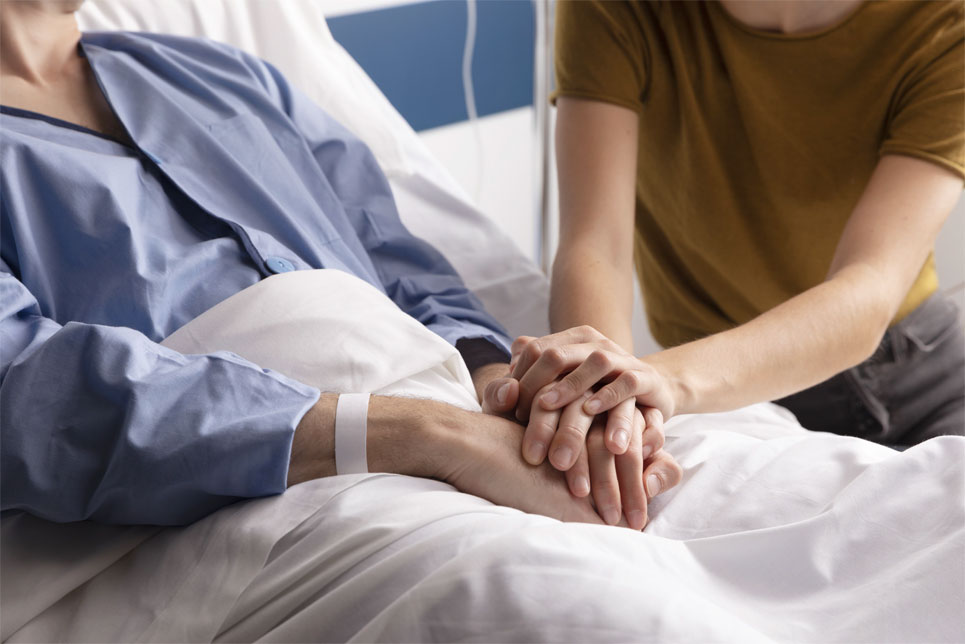How to Care for a Bedridden Patient: A Comprehensive Guide
Caring for a bedridden patient, whether it’s a loved one at home or in a healthcare facility, requires patience and understanding. It’s not just about providing medical care; it’s about ensuring their comfort, dignity, and emotional well-being. Aside from finding the best gifts for hospital patients, sometimes it’s about connecting and providing total support to help them feel comfortable again.
Understanding the Needs of a Bedridden Patient
When someone is confined to a bed, their world shrinks considerably. Whether it’s due to a medical condition, recovery from surgery, or the challenges of old age, being bedridden can lead to a range of complications like pressure sores, contractures, and emotional distress. It’s crucial to have a comprehensive care plan that addresses all aspects of the patient’s well-being.
Understanding their daily challenges and emotional needs is the first step in providing effective care. It’s also important to regularly consult with healthcare providers to adapt the care plan as the patient’s condition evolves.
1. Preventing Pressure Sores and Skin Breakdown
One of the most common issues faced by bedridden patients is the development of pressure sores or bed sores. These occur due to prolonged pressure on the skin, often where bones are close to the surface, like heels, elbows, and hips.
- Changing Positions: Shift the patient’s position at least every two hours. This reduces pressure on vulnerable areas and promotes better blood circulation. Consider using pillows or foam wedges to support different body parts and alleviate pressure.
- Use Specialized Bedding: Invest in pressure-relieving mattresses or pads. Many specialty stores offer a range of bed linen that can help reduce the risk of sores. Additionally, look for breathable fabrics that help maintain skin integrity.
- Skin Care Routine: Keep the skin clean and dry. Gently cleanse with a mild soap during a bed bath and apply moisturizers to keep the skin supple. Pay special attention to areas where the skin is thin or fragile, and check regularly for any signs of redness or irritation.
2. Maintaining Personal Hygiene
Good hygiene is paramount in preventing infections and maintaining the dignity of the bedridden person.
- Regular Bed Baths: Use lukewarm water and no-rinse soap to gently clean the patient. Specialized bed and bath products are designed to make this process easier. Ensure that the water temperature is comfortable, and be gentle to avoid causing any discomfort or injury.
- Managing Incontinence: If the patient uses an adult diaper, change it promptly to prevent skin breakdown. Look for comfortable and easy-to-change options. Regularly applying barrier creams can also help protect the skin.
- Oral Care: Don’t forget about oral hygiene. Regular brushing or using mouthwash can keep the mouth fresh and prevent infections. If the patient is unable to brush their teeth, consider using a soft sponge or gauze to clean their mouth.
3. Ensuring Proper Nutrition and Hydration
A balanced diet and adequate hydration are vital for the patient’s overall health.
- Nutritious Meals: Provide meals rich in vitamins, minerals, and proteins. If the patient has difficulty swallowing, consult a healthcare provider for suitable options. Consider supplements if the patient’s nutritional needs are not being met through regular meals.
- Stay Hydrated: Ensure the patient drinks enough water throughout the day. Avoiding dehydration is key to preventing urinary tract infections and kidney problems. Monitor their fluid intake and output to ensure they are properly hydrated.
4. Encouraging Physical Activity and Exercise
Physical therapy and light exercises can prevent muscle atrophy and improve circulation.
- Gentle Exercises: Consult with a physical therapist to learn exercises suitable for a bedridden patient. Even simple leg and arm movements can make a big difference. These exercises not only improve physical health but can also boost mood and mental well-being.
- Passive Exercises: If the patient cannot move independently, gently move their limbs to stimulate blood flow and reduce stiffness. This can also help in maintaining joint flexibility and reducing the risk of contractures.
5. Providing Emotional Support
Being bedridden can take a toll on a person’s mental health. It’s important to provide emotional support to help them cope with their situation.
- Keep Them Engaged: Spend time with the patient, talk to them, read books, or watch movies together. It’s important to keep their spirits up. Encourage them to express their feelings and concerns, and listen attentively to understand their emotional state.
- Encourage Social Interaction: Facilitate visits or video calls from friends and family. Feeling connected can greatly improve their mental well-being. Celebrate small milestones or occasions with them to bring joy and variation to their routine.
6. Creating a Relaxing Environment
The patient’s room should be a comfortable and pleasant space.
- Ensure Adequate Lighting: Natural light can boost mood and help maintain a regular sleep-wake cycle. Make sure the room is well-lit during the day, but also ensure that it can be darkened to promote restful sleep at night.
- Keep the Room Clean and Organized: A clutter-free space is not only safer but also more pleasant to be in. Personalize the room with items that the patient loves, like photos, artwork, or plants, to make the space more homey and comforting.
7. Keep Them Comfortably Dressed
Ensuring that a bedridden patient is comfortably dressed is not just about aesthetics; it plays a crucial role in their overall comfort and well-being. Adaptive clothes for bedridden patients can prevent skin irritation, make it easier to move or reposition the patient, and significantly boost their mood and self-esteem.
- Choose the Right Fabrics: Opt for soft, breathable fabrics that are gentle on the skin. Avoid materials that are too rough or that can cause overheating.
- Easy-to-Wear Designs: Clothing that is easy to put on and take off is essential for bedridden patients. Silverts offers a range of open back adaptive clothing, which are not only stylish but also incredibly practical for those confined to a bed as these accommodate medical devices, reduce the risk of pressure sores, and allow for easy access for medical examinations or treatments. These designs make dressing and undressing less of a chore for both the patient and the caregiver.
- Regular Clothing Changes: Another important tip for dressing a patient is changing their clothes regularly to maintain hygiene and prevent skin issues. This also provides an opportunity to check for any new pressure sores or skin breakdowns.
Caring for a bedridden patient is a challenging yet rewarding responsibility. It’s about more than just meeting their physical needs; it’s about nurturing their emotional well-being and ensuring their dignity. By following these tips and utilizing products designed for bedridden patient care, you can make a significant difference in the life of your loved one or patient. Remember, every small act of care adds up to a big difference in their quality of life.





No Comments